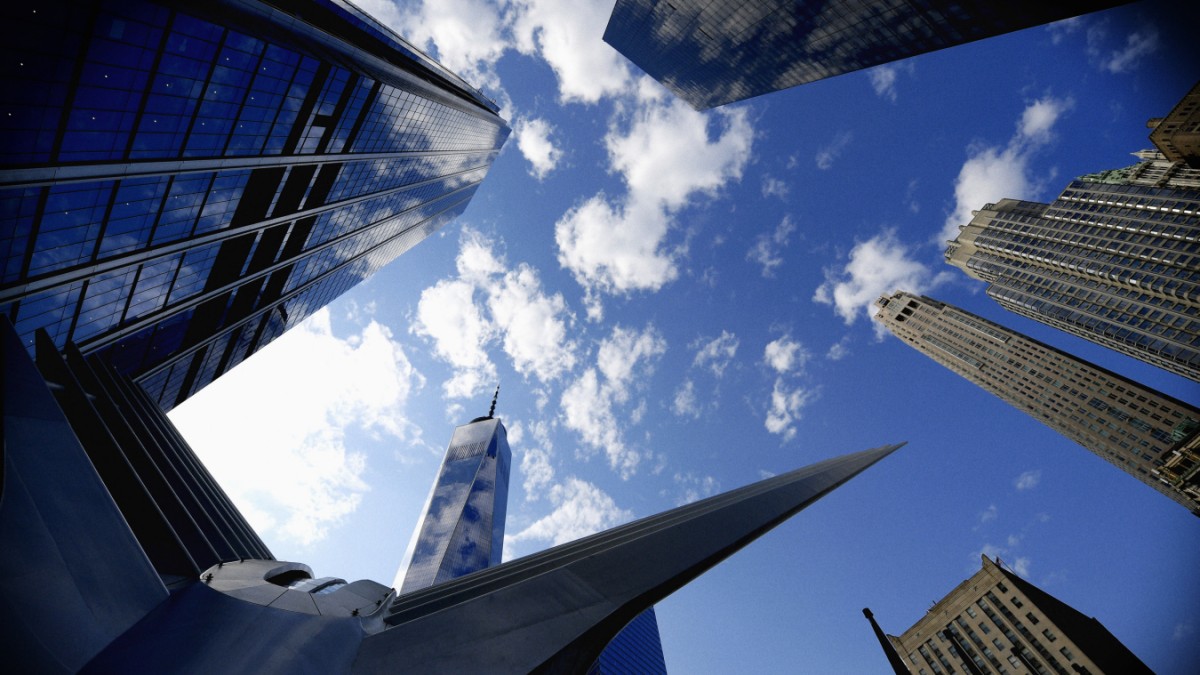The precious commodity that Robert Shapiro has been buying and selling for more than five decades cannot be touched. You can’t see it, you can’t take pictures of it and you can’t market it in glossy brochures. “We literally deal with nothing,” says Shapiro, but his wink reveals that he can live very well off this nothing. Yes, it has made him wealthy and is becoming more valuable every year: Shapiro, founder and head of the New York real estate consultancy City Center Real Estate, trades in air construction rights.
Aviation rights are required when building owners do not want to be satisfied with the maximum height allowed by local regulations when building a residential or office building. They are thus primarily a phenomenon in large American cities, where land is scarce and additional living space can often only be created by building upwards. At the same time, in Manhattan, for example, there is a growing demand for apartments with spectacular views and lots of light, for the ultra-rich, who without hesitation put high double-digit million amounts on the table. The trend right now is towards spectacular, super-slim skyscrapers.
For a long time there was a consensus among lawyers that a landowner also owns the airspace above his property – to a certain extent into space. As early as the 13th century, the legal scholar Accursius is said to have formulated the Latin sentence “Cuius est solum, eius est usque ad caelum et ad inferos”, which translates loosely as: Whoever owns land, it belongs up to heaven and down to hell. However, with the construction of the first skyscrapers, the emergence of commercial air travel and the incorporation of aesthetic considerations into urban planning, this right was limited in the USA. Since then, the maximum height of a building has, in simple terms, been linked to the size of the property.
The step has to be carefully considered: Once sold, airspace is gone forever
However, in a country where almost everything has a price tag, such caps are negotiable. Those who want to build higher than actually possible can simply buy the missing air rights. To do this, he must first ask the owners of the adjacent properties and then their direct neighbors to transfer unused air rights to lower houses. This can be lucrative for both sides: the buyer can, so to speak, stack the acquired airspace on top of one another and build it higher accordingly, while an unexpected windfall rains down on the seller, which in prime locations can easily amount to several thousand dollars per square meter of air.
Nevertheless, the step has to be carefully considered, because once airspace is sold, it is gone forever – so you can never top up your own house again. It may also be that the new neighbor is allowed to provide his skyscraper with cantilevers that increase the available floor space of the skyscraper and literally float above the neighboring houses. And some will fare like New Yorker Amy Casey, who once moved to 58th Street in Manhattan because she liked the view of the famous Carnegie Hall so much. But then she and the other members of the housing association sold the air rights to their apartment building and put a high-rise in front of their noses. Carnegie Hall has not been seen since then.
While normal owners are only allowed to sell air rights to owners of adjacent properties or their neighbors up to the next cross street, there are sometimes more lax rules for schools, churches, theaters or owners of listed buildings who cannot add to their premises: in some places you have the option to also visit To sell landlords on the other side of the street or across the street.
Rights broker Shapiro alone has been involved in the purchase and sale of more than 300,000 square meters of air over the past few decades. According to New York University, rights worth more than one billion dollars changed hands across the city between 2003 and 2011. Since then, the trend has increased significantly “because the country is becoming scarcer,” says Ross Moskowitz, partner at the law firm Stroock & Stroock & Lavan. Mayor Bill de Blasio also has an interest in high-rise construction because he will only be able to implement his central election campaign promise to create more affordable housing if the total number of houses and apartments in the city increases.
A strange structure, 426 meters high, with a footprint of 28 by 28 meters
Citizens and visitors to New York can already visit a result of this development. A few hundred meters southeast of Central Park, an apartment building has been standing for some time, which is reminiscent of an extra-long chewing gum package and has already received many more or less friendly nicknames. With a footprint of just 28 by 28 meters, the house comes to a height of 426 meters, replacing the much wider Empire State Building as the second tallest building in the city (number one is the One World Trade Center). Although the construction of such slim skyscrapers is expensive, the number of apartments with lots of light and groundbreaking views is significantly higher than in smaller buildings. The sales proceeds or rental income that can be achieved are correspondingly higher. If you want to rent a 200-square-meter apartment on one of the upper floors of that bubble gum house on Park Avenue, you have to pay $ 35,000 – per month. Shapiro mockingly calls the skyscraper the “Viagra Tower”, although it was he himself who obtained most of the aeronautical construction rights for its construction. In total, the purchase of these rights took more than ten years, and it began when the famous Drake Hotel was still on the property.
The question that many New Yorkers are now asking is whether one day Manhattan will only consist of very tall and very low buildings. Brian Strout, Vice President at City Center, thinks this is unlikely, as there are many medium-sized houses in the city that are profitable for the owners and that it would not make sense to demolish. Robert Jacobs, partner at the law firm Belkin Burden Wenig & Goldman, has a completely different opinion: “The concern of urban planners is legitimate,” he says. “I see a future New York with very large and small structures – and practically nothing in between.”
By the way, the city’s most famous air rights buyer was a certain Donald Trump. When, at the end of the 1970s, he was planning the dark glass “Tower” that now stands at the corner of 56th Street and Fifth Avenue and bears his name, he sent envoys to all future neighbors. One of those who sold him air construction rights was the jeweler Tiffany, who runs his world-famous department store next door, but only a few floors. When Trump’s second daughter was born years later, the legend goes, he didn’t have to look far for a name: Tiffany.
– .


